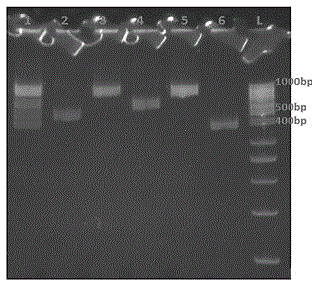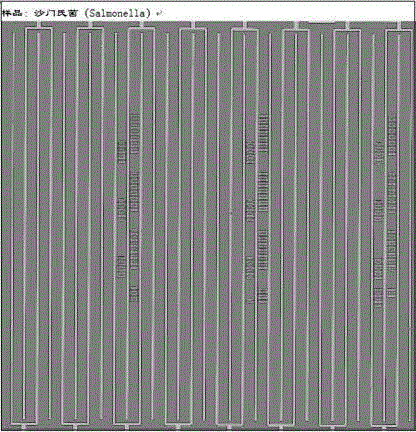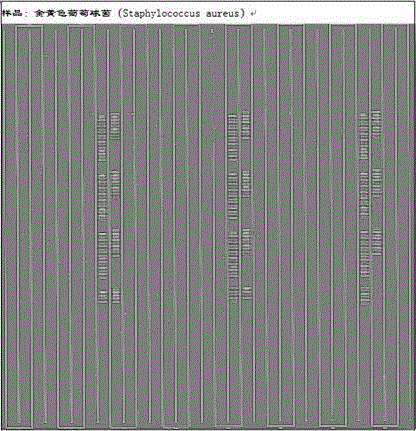Quintuple PCR primers for detecting pathogenic bacteria in fresh agricultural products, probe and detection kit
A technology for pathogenic bacteria and agricultural products is applied in the field of five-fold PCR primers, probes and kits for detecting pathogenic bacteria in fresh and live agricultural products, which can solve the problem of increased non-specific amplification reactions, decreased sensitivity, and restricted development of multiplex PCR technology. To achieve the effect of strong primer specificity, high accuracy, and ensuring sensitivity and specificity
- Summary
- Abstract
- Description
- Claims
- Application Information
AI Technical Summary
Problems solved by technology
Method used
Image
Examples
Embodiment
[0075] 1. Primer design
[0076] The genomes of 132 strains of five pathogenic bacteria were downloaded from the NCBI database, and one strain genome sequence was selected from each strain, and the selected genome sequences were compared with BLAT software to find the difference between any two genomes. For each bacterial species genome, according to the obtained sequence intervals with similarity comparison results, perform a complementary inversion operation to obtain sequence intervals specific to the bacterial species. The purpose of this step is preliminary screening and narrowing the scope of screening. These screened segments were manually blasted on the NCBI database to screen out species-specific gene segments. The species-specific gene segments obtained by screening are then aligned within the species, and finally the gene sequence segments with intra-species homology > 95% and inter-species homology < 75% in the gene sequences of the pathogenic bacteria to be teste...
PUM
 Login to View More
Login to View More Abstract
Description
Claims
Application Information
 Login to View More
Login to View More - R&D
- Intellectual Property
- Life Sciences
- Materials
- Tech Scout
- Unparalleled Data Quality
- Higher Quality Content
- 60% Fewer Hallucinations
Browse by: Latest US Patents, China's latest patents, Technical Efficacy Thesaurus, Application Domain, Technology Topic, Popular Technical Reports.
© 2025 PatSnap. All rights reserved.Legal|Privacy policy|Modern Slavery Act Transparency Statement|Sitemap|About US| Contact US: help@patsnap.com



